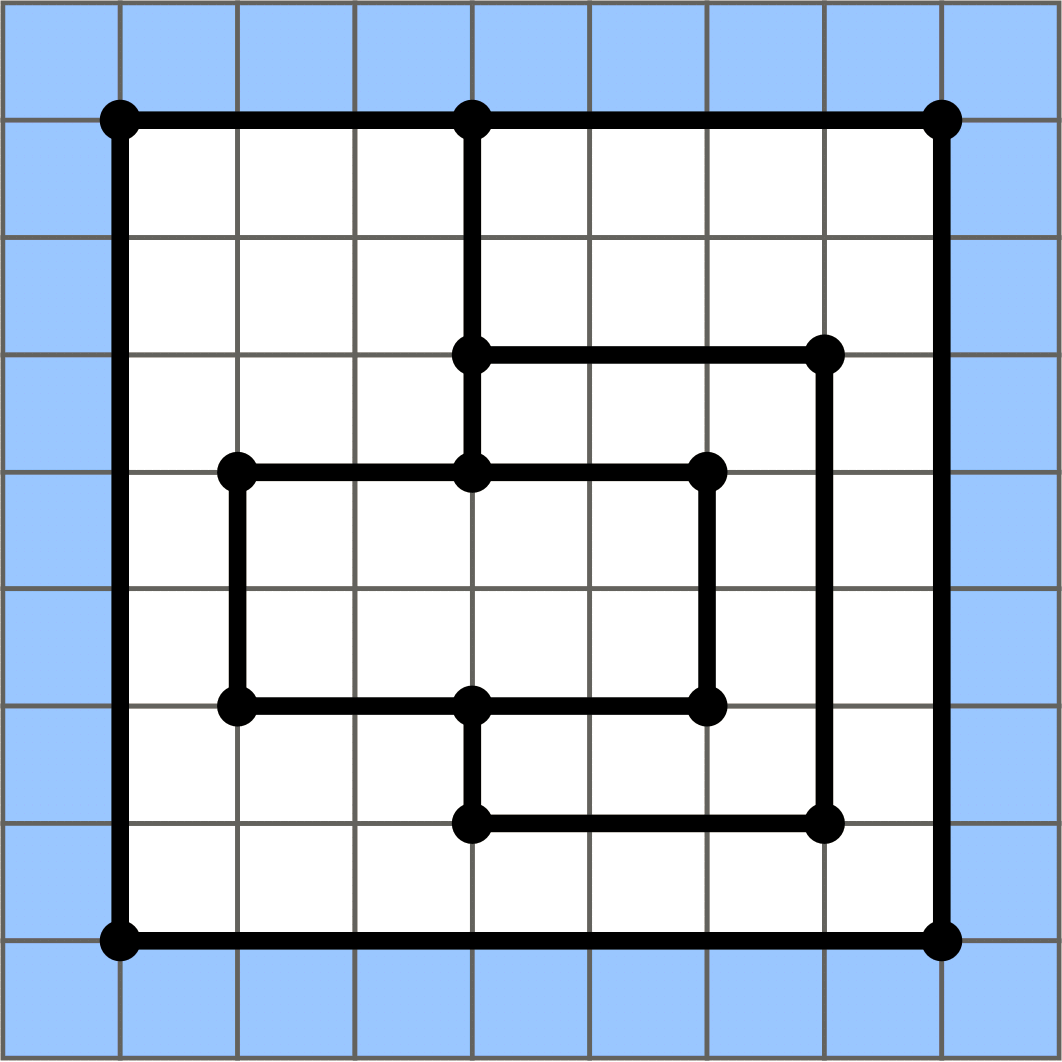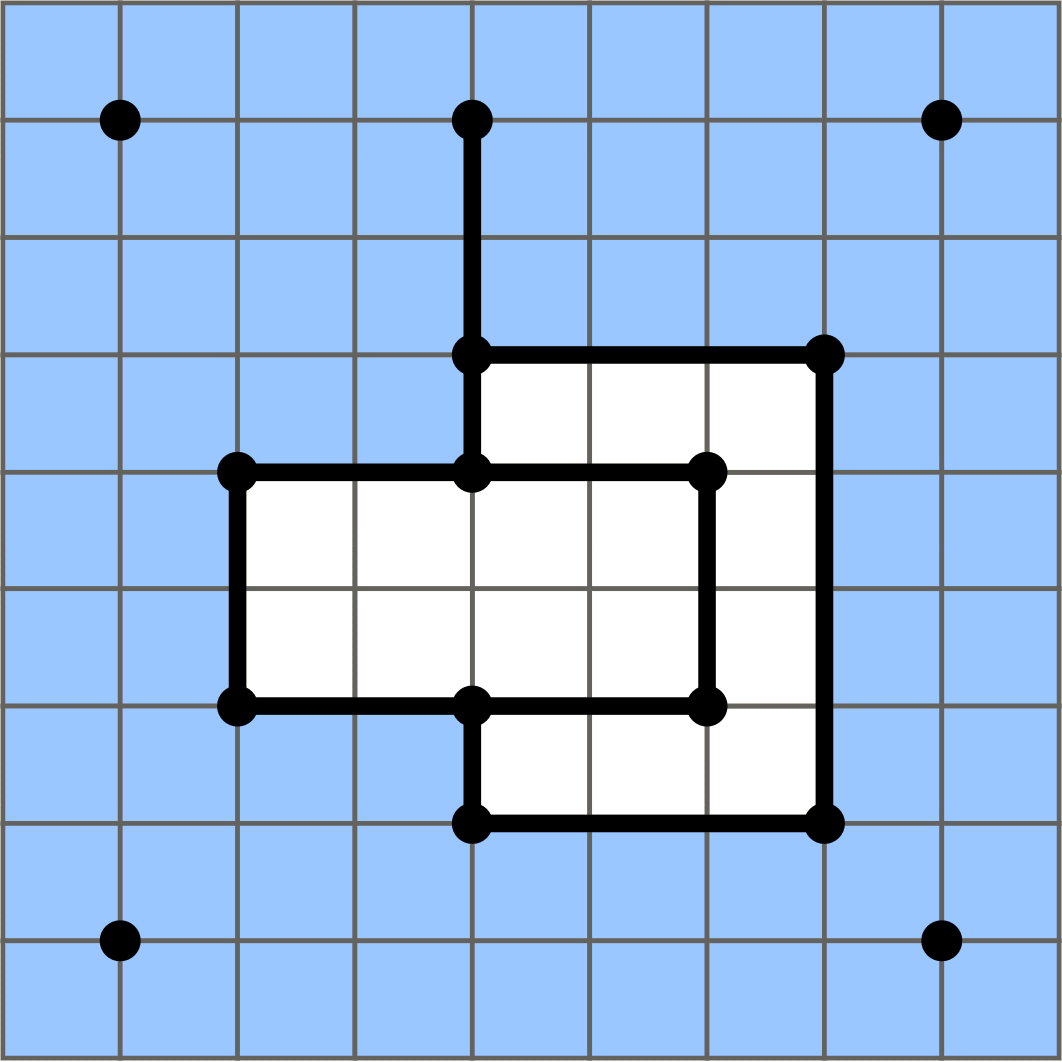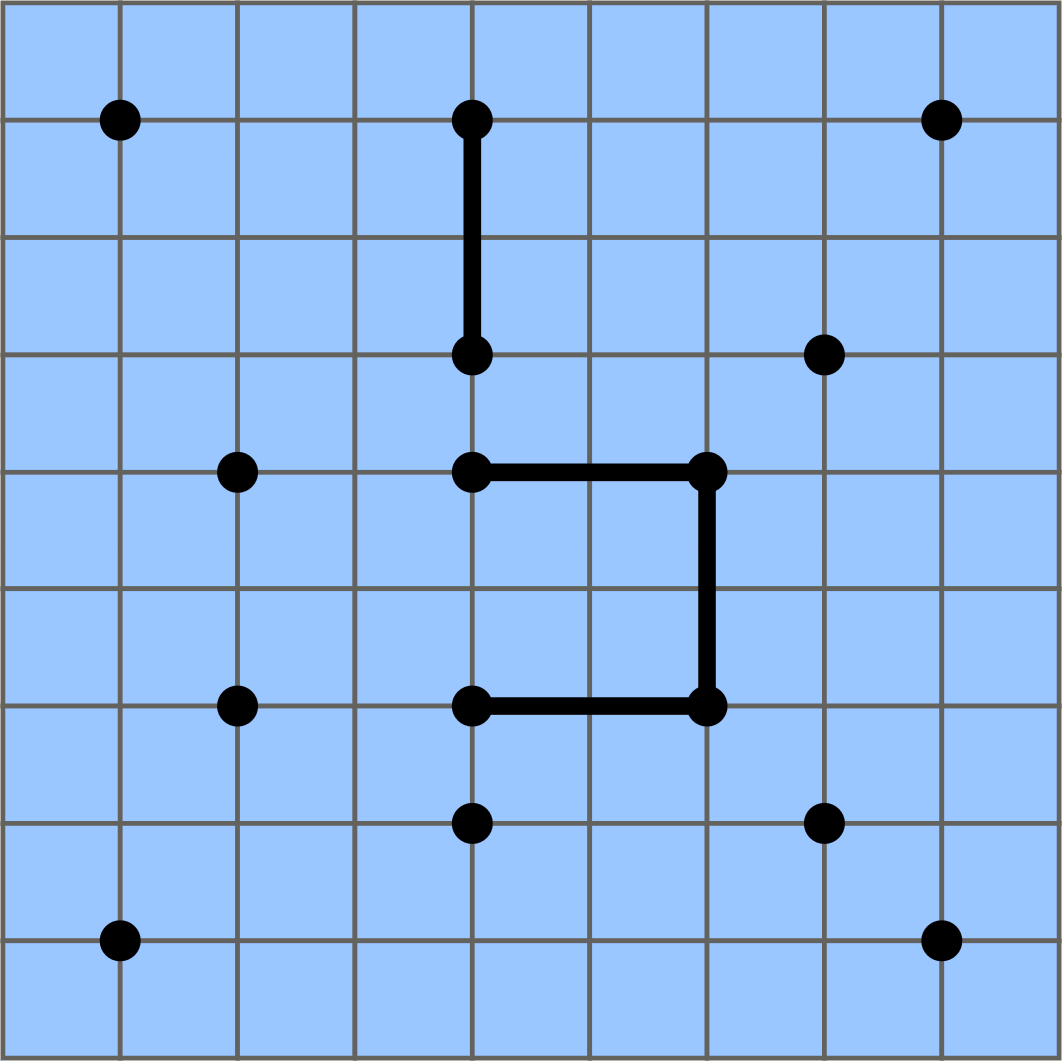IOI '07 P2 - Flood
View as PDFIOI '07 - Zagreb, Croatia
In 1964 a catastrophic flood struck the city of Zagreb. Many buildings were completely destroyed when the water struck their walls. In this task, you are given a simplified model of the city before the flood and you should determine which of the walls are left intact after the flood.
The model consists of points in the coordinate plane and
walls.
Each wall connects a pair of points and does not go through any other
points. The model has the following additional properties:
- No two walls intersect or overlap, but they may touch at endpoints;
- Each wall is parallel to either the horizontal or the vertical coordinate axis.
Initially, the entire coordinate plane is dry. At time zero, water instantly floods the exterior (the space not bounded by walls). After exactly one hour, every wall with water on one side and air on the other breaks under the pressure of water. Water then floods the new area not bounded by any standing walls. Now, there may be new walls having water on one side and air on the other. After another hour, these walls also break down and water floods further. This procedure repeats until water has flooded the entire area.
An example of the process is shown in the following figure.

The state at time zero. Shaded cells represent the flooded area, while white cells represent dry area (air).

The state after one hour.

The state after two hours. Water has flooded the entire area and the
Write a program that, given the coordinates of the points, and the
descriptions of
walls connecting these points, determines which of the
walls are left standing after the flood.
Input Specification
The first line of input contains an integer
,
the number of points in the plane.
Each of the following lines contains two integers
and
(both
between
and
, inclusive), the coordinates of one point. The
points are numbered
to
in the order in which they are given. No
two points will be located at the same coordinates.
The following line contains an integer
, the
number of walls.
Each of the following lines contains two different integers
and
, meaning that, before the flood,
there was a wall connecting points
and
. The walls are numbered
to
in the order in which they are given.
Output Specification
The first line of output should contain a single integer , the number
of walls left standing after the flood.
The following lines should contain the indices of the walls that are
still standing, one wall per line. The indices may be output in any
order.
Grading
In test cases worth a total of of the points, all coordinates will
be at most
.
In those same cases, and cases worth another of the points, the
number of points will be at most
.
Sample Input
15
1 1
8 1
4 2
7 2
2 3
4 3
6 3
2 5
4 5
6 5
4 6
7 6
1 8
4 8
8 8
17
1 2
2 15
15 14
14 13
13 1
14 11
11 12
12 4
4 3
3 6
6 5
5 8
8 9
9 11
9 10
10 7
7 6Sample Output
4
6
15
16
17This example corresponds to the figure above.
Comments